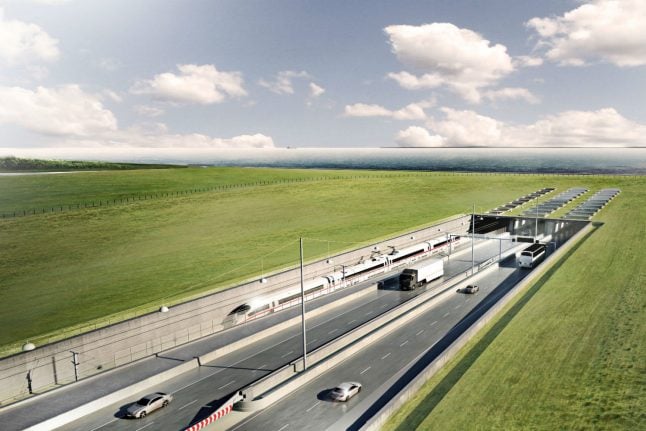TUNNEL
New tunnel emergency hits Norway
A truck has filled Norway's Byfjord Tunnel with smoke, causing the emergency services to rush in and rescue the six cars stuck inside.
Published: 12 August 2013 11:04 CEST

Gudvanga Tunnel: Arne Med/NTB/Scanpix
A truck has filled Norway's Byfjord Tunnel with smoke, causing the emergency services to rush in and rescue the six cars stuck inside.
The truck was run by Denmark's DSV Logistics, the same company which controlled a second lorry which burst into flames last Monday in the Gudvanga Tunnel, sending 65 people to hospital.
"It is very sad that this should happen with our trucks twice in one week," Jesper Skjærris, the chief executive of DSV Norway told the VG newspaper.
Fire chief Svein Kristiansen, who ran the rescue operation, said that the truck did not appear to have caught fire, and that the smoke may have been the result of engine trouble.
"The smoke was still just as toxic as it would have been in a fire, and there was a lot of smoke," he said.
The accident will come as an embarrassment to Norwegian Prime Minister Jens Stoltenberg who on Thursday tried to reassure the public that Norway's tunnels, essential for transport in the mountainous country, remain safe.
Stoltenberg on Monday came under attack from Einar and Laila Morland, who have been celebrated as heroes for rescuing six others from the Gudvanga fire.
"It is disappointing to read that you, the Norwegian Prime Minister believes that the Norwegian tunnels are safe, when we were about to die," they wrote in an open letter published on Sunday. "Can you not recognize that there actually are many tunnels in Norway that are not safe?"
In his interview with NRK, Stoltenberg stressed that while it was important to carry out "modernisation" of Norway's tunnel network, statistics showed that the risk of accident in a tunnel was slightly less than on ordinary roads.
"The problem is that if an accident does take place in a tunnel, then the consequences can be much more serious," he said.
While the emergency services have been congratulated for saving the lives of all 85 trapped in the Gudvanga Tunnel, the accident showed up worrying failings.
The emergency communication system in the tunnel was not functioning, meaning police needed to contact those trapped on their mobile phones, and the local hospitals had a shortage of the drug needed to treat those poisoned with cyanide released by burning plastic.
The Gudvanga Tunnel, Norway's second longest, opened on 17 December 1991. The Byfjord tunnel, in Rogaland near Stavanger opened in 1992.
Url copied to clipboard!


 Please whitelist us to continue reading.
Please whitelist us to continue reading.
Member comments